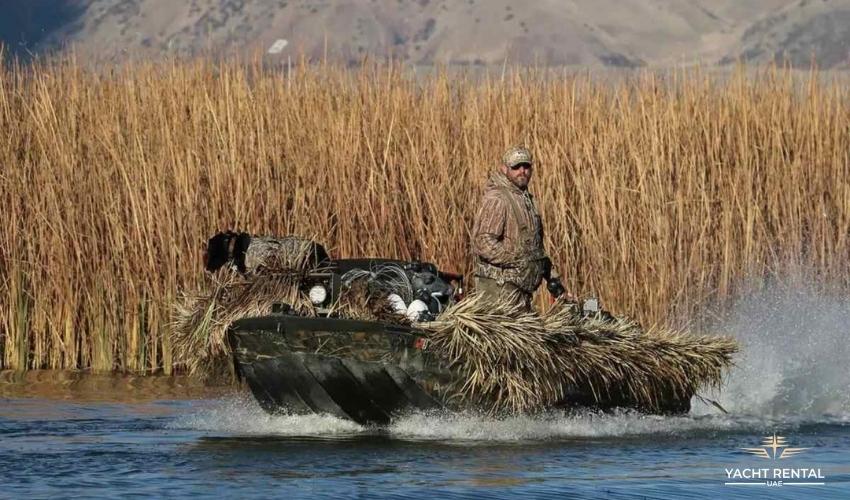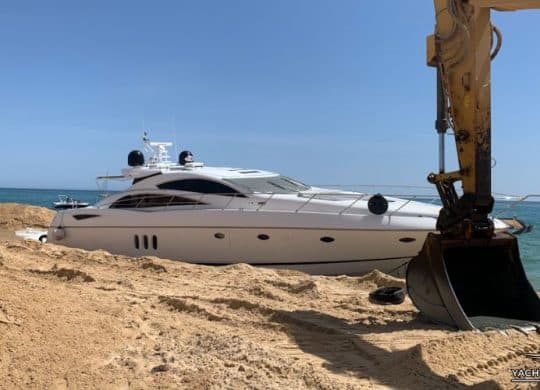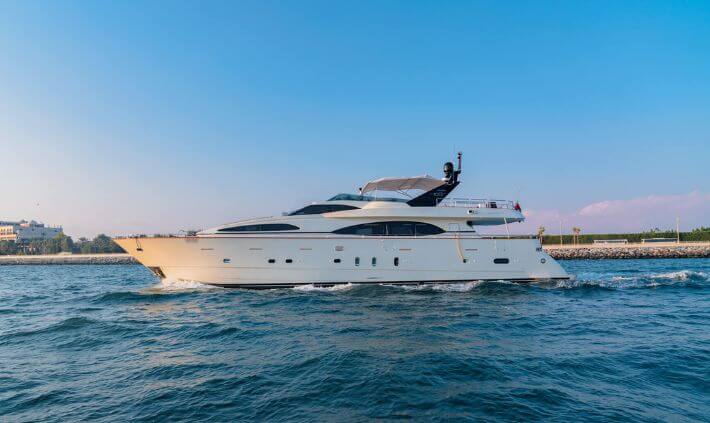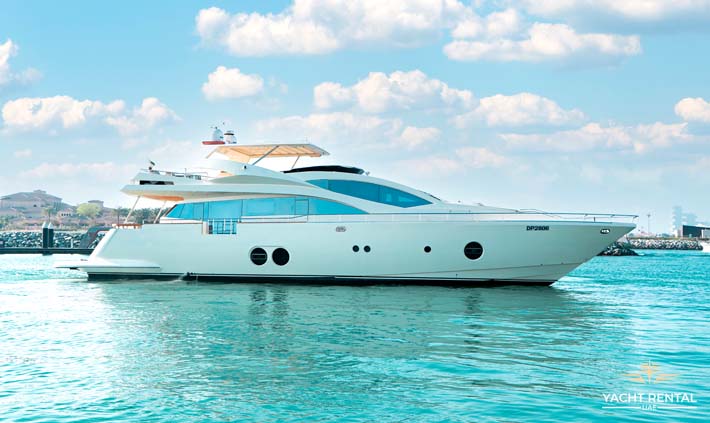Pre-Launch Safety Checklist
Your hunt’s safety is often determined before you even leave the ramp. A careful pre-launch check of your boat, gear, and plans is the foundation of a successful day on the water. Not all boats are suited for hunting. A vessel with low sides or a rounded hull can be dangerously unstable. Jon boats and skiffs with flat bottoms are often preferred for their stability. Regardless of the type, your boat must be in excellent condition.
- Hull Integrity: Check for any cracks or leaks in the hull.
- Engine & Fuel: Test the engine before you leave. Ensure you have more than enough fuel for your trip, following the general rule of thirds: one-third for the trip out, one-third for the trip back, and one-third in reserve.
- Drain Plug: Confirm the drain plug is securely in place. It’s a simple mistake that has sunk many boats.
- Registration: Ensure your boat’s registration and any required permits are current and on board.
Essential Gear Beyond Your Firearm
Safety equipment is not optional. In an emergency, it is the only thing that matters. Your Personal Flotation Device (PFD) is the most critical piece of gear. You must wear it, not just store it. Modern PFDs are designed for hunters, offering camouflage and freedom of movement. Choosing the Right Personal Flotation Device (PFD) for hunting:
| PFD Type | Pros for Hunters | Cons for Hunters | Best Use Case |
| Inflatable PFD | Lightweight, offers excellent mobility for shooting. | Requires manual or automatic inflation; offers no insulation. | Mild weather hunts where movement is key. |
| Foam Vest PFD | Inherently buoyant, provides insulation against cold. | Can be bulkier and may slightly impede movement. | Cold weather or rough water conditions. |
Beyond your PFD, you should have a basic but vital set of safety items. According to U.S. Coast Guard regulations, proper safety equipment is mandatory on all vessels.
- A complete first-aid kit in a waterproof case.
- An anchor with enough line for the depths you anticipate.
- Paddles or oars, even if you have a motor.
- Sound and light signaling devices, such as a horn, whistle, and flares.
- A waterproof flashlight with fresh batteries.
Create a Float Plan: Your Shore-Based Lifeline
A float plan is a simple document you leave with a reliable person on shore. It details your plans and tells authorities where to look if you fail to return on time. Here is a sample plan.
| Information Category | Details to Provide |
| Your Name & Contact | Your full name and cell phone number. |
| Number of Passengers | List everyone on board. |
| Boat Description | Type, color, length, and registration number. |
| Planned Route | Where you intend to launch and hunt. |
| Departure Time | The time you are leaving the dock. |
| Expected Return Time | When you plan to be back. |
| Emergency Contact | Name and number of the person you left the plan with. |
Check Weather and Water Conditions
Waterfowl love foul weather, but your boat may not. Check the marine forecast right before you leave. Pay close attention to wind speed, fog warnings, and changing temperatures. A small craft advisory is a serious warning that should not be ignored.
On-the-Water Protocols: Rules for a Live Hunt

Once on the water, discipline and clear communication are essential. The environment is dynamic, and every hunter must remain focused on safe practices.
Firearm Safety in a Confined Space
Standard firearm safety rules become even more critical on a boat. The unstable surface increases the risk of a fall or an accidental discharge.
- Transport firearms unloaded and in a protective case.
- Agree with your partners when it is safe to uncase and load your guns. This should only happen when the boat is stopped and anchored or secured.
- Keep the safety on and your finger off the trigger until you are ready to shoot.
- Always maintain strict muzzle control. Never point your firearm at anything you do not intend to shoot.
Establishing and Respecting Zones of Fire
With multiple hunters in a small boat, you must establish clear zones of fire. This prevents one hunter from swinging their muzzle across the path of another.
- Each hunter agrees to only shoot within a specific arc.
- Example: A hunter in the bow might take shots from 10 o’clock to 2 o’clock. The hunter in the stern takes shots from 8 o’clock to 4 o’clock.
- No one ever shoots across the centerline of the boat or over a partner’s head.
Maintaining Stability: Weight, Movement, and Dogs
Capsizing is a leading cause of fatalities in boating accidents. Preventing it requires attention to balance.
- Keep gear, including shell boxes and decoys, stored low and distributed evenly.
- Remain seated whenever possible. If you must stand to shoot, plant your feet wide and use the boat for support.
- Move carefully and one person at a time. Announce your intention to move.
- A hunting dog can upset a boat’s stability. Train your dog to remain still until commanded to retrieve.
Safe Shooting and Retrieval Practices
A sudden lunge for a downed bird can send you overboard. Use patience and proper technique for both shooting and retrieval.
- Stop the boat’s movement and ensure you have a stable shooting position before firing.
- Never lean your body over the side of the boat to grab a bird or decoy.
- Use the motor or paddles to bring the boat alongside the object you need to retrieve.
- Use a long-handled net or a boat hook to bring the item aboard.
Emergency & Post-Hunt Procedures
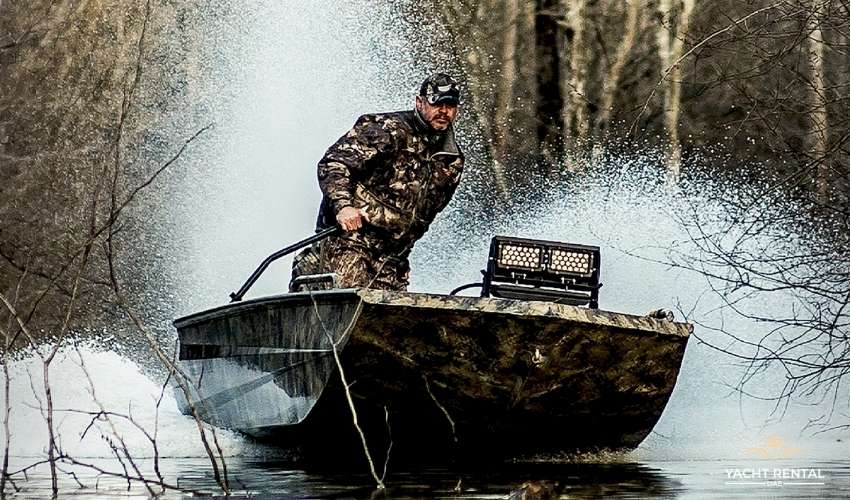
Knowing how to react in an emergency can save a life. Safety awareness must continue until all gear is stowed and you are on your way home.
Man Overboard (MOB): A Step-by-Step Response
A fall into cold water is a life-threatening emergency.
- Immediately shout “Man Overboard!” to alert everyone.
- Throw a PFD or other buoyant object to the person in the water, even if they are wearing a PFD.
- Assign one person to be a spotter who does nothing but point at and watch the person in the water.
- Carefully maneuver the boat to approach the victim from downwind, shutting off the engine to avoid propeller injury.
- Pull the person aboard over the stern, which is often the lowest and most stable point.
The Danger of Waders
Falling into the water while wearing waders is extremely dangerous. Once they fill with water, they act like a concrete anchor.
- Always wear a snug-fitting wader belt to trap air inside and slow water entry.
- Always wear your PFD on the outside of your waders and jacket.
- Some hunters carry a knife in an accessible location to cut wader straps in an emergency.
Safely Concluding Your Hunt
The hunt is not over until the firearms are safely put away.
- Unload all firearms completely before the boat begins moving back to the dock.
- Case your firearms once they are confirmed to be unloaded.
- Secure all loose gear before you begin trailering the boat.
Frequently Asked Questions (FAQs)
Is it legal to have a loaded gun in a boat?
Laws vary by state and jurisdiction. Generally, it is illegal to have a loaded firearm in a boat while it is under power. Firearms should only be loaded when the boat is stopped and anchored for the purpose of hunting. Always check your local regulations.
What is the single most important piece of safety gear for boat hunting?
Your Personal Flotation Device (PFD). Statistics from the U.S. Coast Guard consistently show that in fatal boating accidents, the vast majority of victims were not wearing a PFD.
How do you stay stable when shooting from a small boat?
Remain seated if possible. If you must stand, keep a low center of gravity with your feet planted wide apart. Brace yourself against a stable part of the boat and never shoot while the boat is making a sharp turn or in rough water.
What should I do if my dog jumps out of the boat?
Stay calm. Use the same procedure as a man overboard incident. Maneuver the boat alongside your dog, cut the engine, and help them back aboard at the stern if possible. Many hunters use a dog ramp or ladder to make this safer and easier.
Also Read: How Does Adding Mass to a Boat Affect its Ability to Float
Final Words About Hunting From a Boat
A successful hunt is measured by the memories made, not just the game harvested. The true mark of an expert hunter is not their aim, but their discipline. Returning safely to the dock with your partners is the only outcome that matters. Treat every safety rule with the respect it deserves, on every trip.

